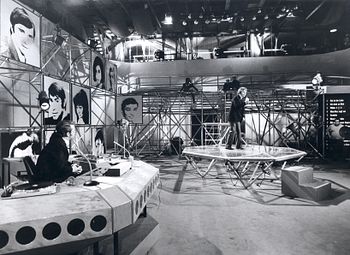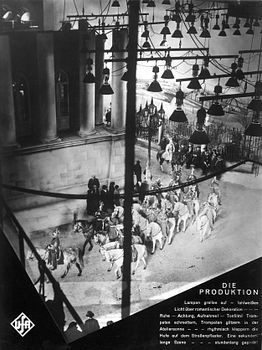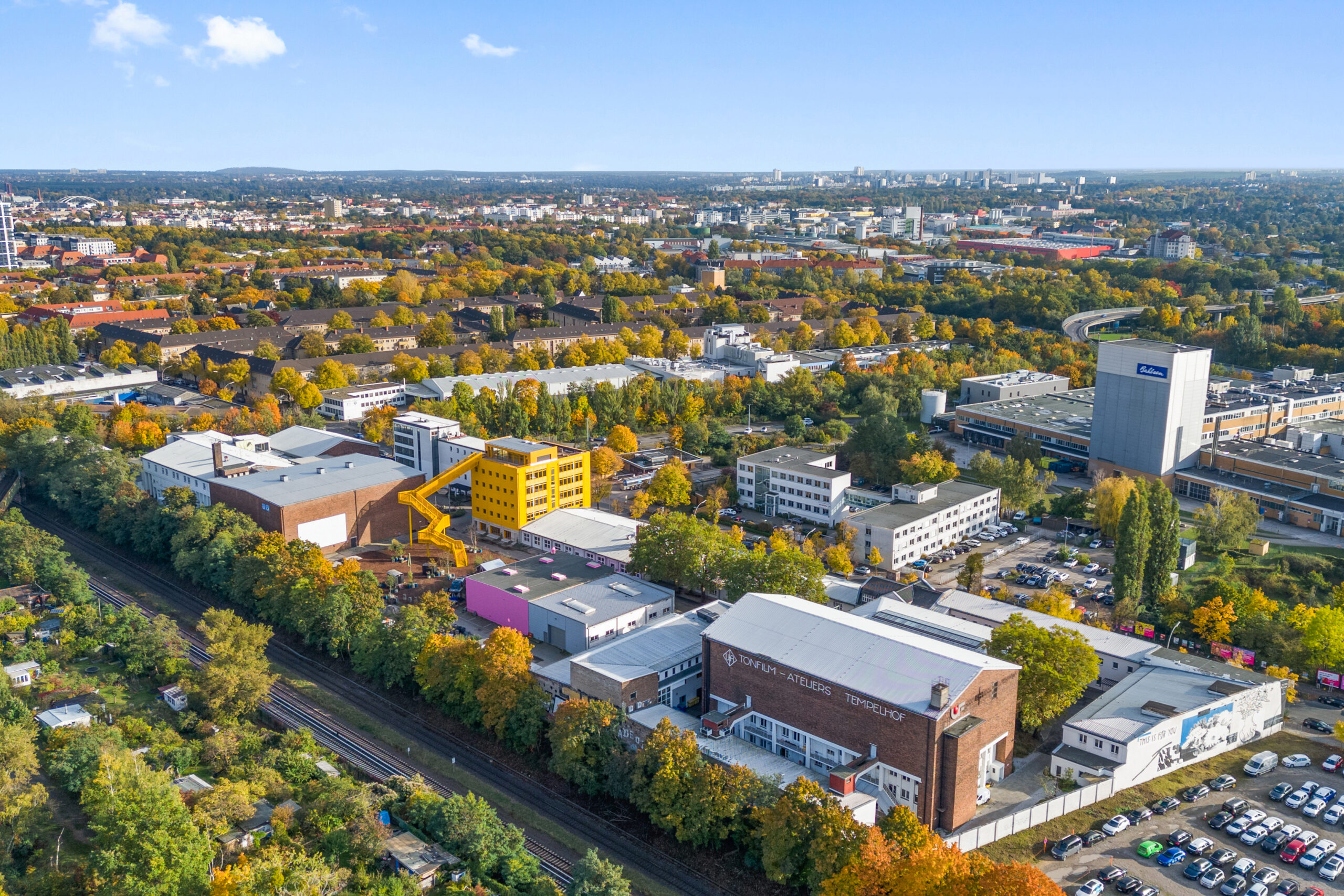The transition to sound: The golden era of the Tempelhof studios
21.12.2023
After the explosive debut of silent film at the beginning of the 20th century, the two glass houses on Oberlandstrasse were at the center of German film production. At the end of World War I, the studios were bought by Universum-Film AG (Ufa) and skyrocketed to prominent status in the film industry. Even the German president Friedrich Ebert made sure to pay them a visit in 1920. Just for perspective: that same year there were 510 German film premieres! Film production was indeed going strong.
During those golden years, productions from Oberlandstraße traveled as far as the USA. Among some of the internationally successful titles were “Anna Boleyn” by Ernst Lubitsch and “Der Golem, wie er in die Welt kam” by Paul Wegener. Cinematographer and film director Karl Freund also worked in the studios south of Tempelhofer Feld. With his “unleashed camera” – a camera that could move freely through spaces – he inspired and influenced future generations of directors in Germany and beyond.
It’s not surprising that in this highly prolific time of German cinema, acclaimed British directors flocked to Oberlandstrasse. One of them was none other than Alfred Hitchcock, who used the studios in the mid-1920s. Still quite unknown at the time, his great talent and characteristic approach to filmmaking was already recognized by the magazine “Lichtbild-Bühne.” A few years later, Edgar Wallace, who is considered the inventor of the modern thriller, was in the Tempelhof studios to film his crime movie “The Red Circle.”
Increasingly strong national and international competition
But just as quickly as the studios on Oberlandstrasse rose to fame, so too came their gradual decline. The film industry’s big names were increasingly drawn to the US where Hollywood was rapidly establishing itself as a cinema giant. Lubitsch and Freund, but also Berlin-bred actress Marlene Dietrich, chased their careers across the pond.
The competition was not only outside the borders, but also within the country as the Tempelhof studios were up against other rivals within the German Republic. In 1921, Ufa added the Neubabelsberg studios. There a newly built 8,000-square-meter challenged the demand for the studios on Oberlandstraße as they simply could not compete with such structural proportions. Other such gigantic studios popped up during that time in smaller towns, such as Johannisthal and Staaken.
Too loud for the new sound films
Towards the end of the 20s, the proximity of the Ringbahn railway and the airport adjacent to Oberlandstraße turned out to be problematic for film production. The reason? The invention of sound film demanded extremely quiet conditions as even minor external fluctuations could disrupt the recordings.
Ufa generally lagged behind in the switch from silent to talkies, but when it eventually took the leap forward, the Neubabelsberg studios became the center of attention. By 1930, nine studios were fully equipped and fit for sound film production. Meanwhile, the two Tempelhof glass houses were rented out to foreign and female producers.
Nevertheless, the first sound film productions were shot in the Tempelhof studios as early as the late 1920s. One noteworthy example is Bolváry’s “Two Hearts in ¾ Time,” a sound film operetta that made its debut in 1930.
It was not until 1931 that the conversion to sound film started in Oberlandstraße. The glass houses had to be made soundproof: a shell-like structure made of steel, concrete and bricks was built around the glass, while the roof was covered with a soft, sound-insulating material. This cost Ufa 280,000 Reichsmarks – which today is the equivalent of about 1.2 million Euros.
A mixed outlook
Despite the buildings’ conversion, it was undeniably the beginning of a dark time for the studios on Oberlandstraße. When the National Socialists came to power, the emigration of producers, actors and directors increased. In 1937, Ufa was bought by the governmental party and, like everything else, was deeply affected by conservatism and film censorship. Later on, the studios took another blow when the Second World War bombing that started in 1943 caused serious damages to the premises.
It was obvious that the two iconic film production sites could only continue their trajectory after the end of the war. Two important milestones following the war’s destructive consequences were the studios’ newfound roles as dubbing studios and TV production sites with long-term tenants such as the public television channel ZDF.
“I arrived in Berlin knowing not a single word of German. My job was art director, and I worked side by side with a German draftsman. The only way we could communicate was by pencil – drawing things so we could understand each other. We were both designing titles and sets, and finally I was forced to learn the language.”
-
Alfred Hitchcock, on the set of The Blackguard, filmed at the UFA studios
Related news





